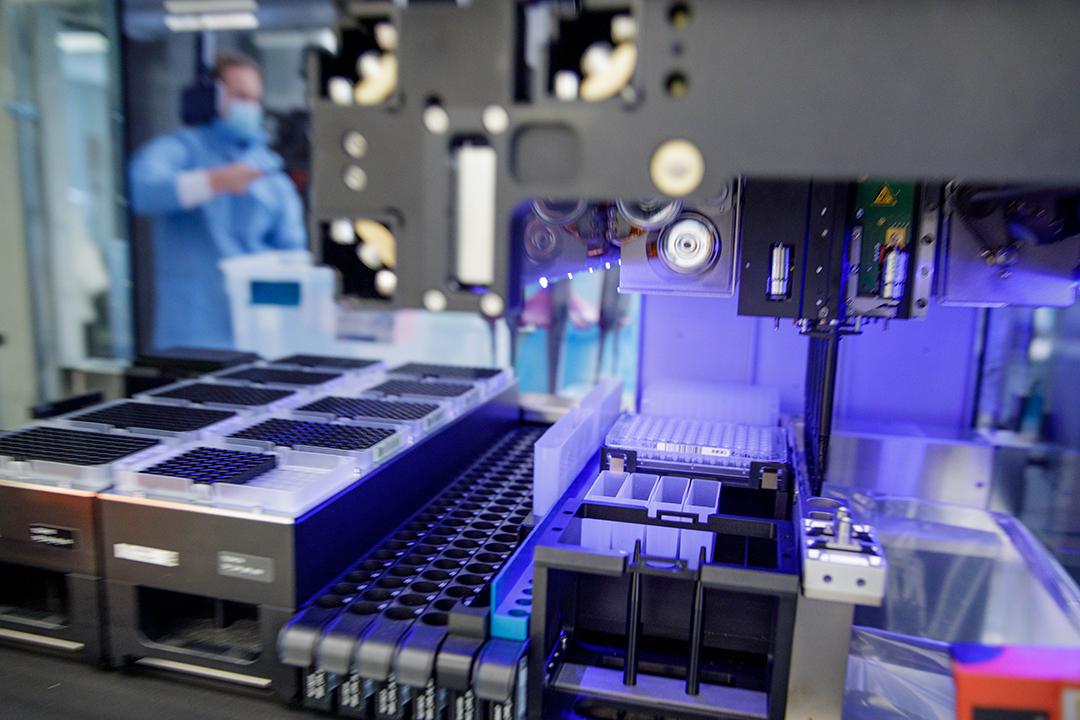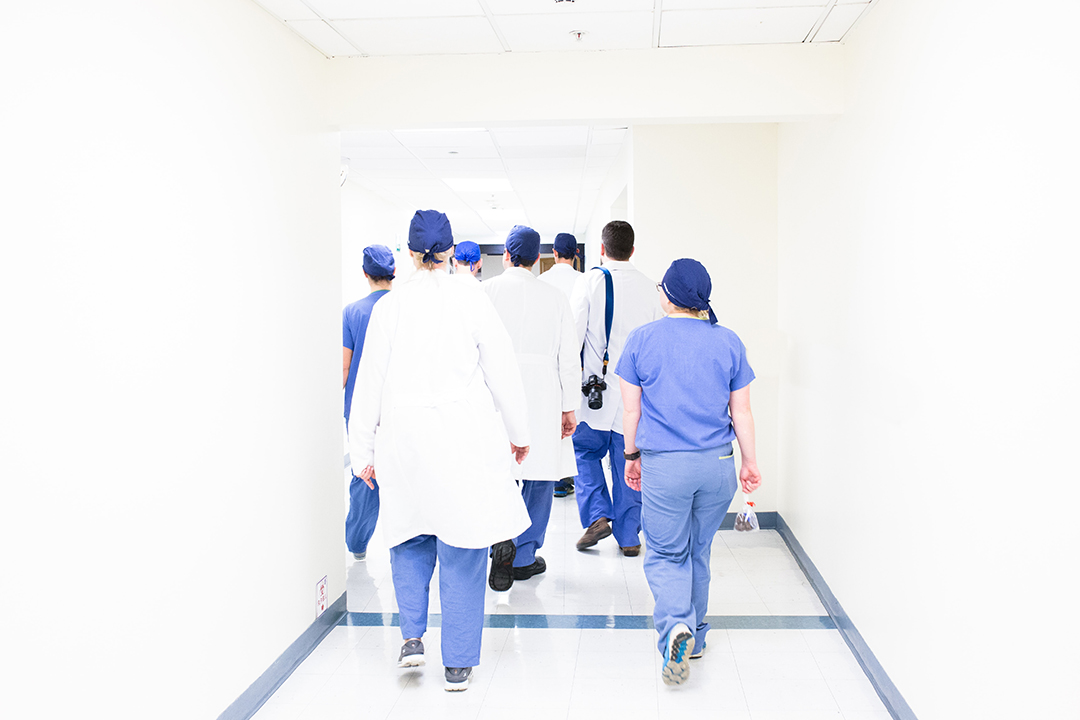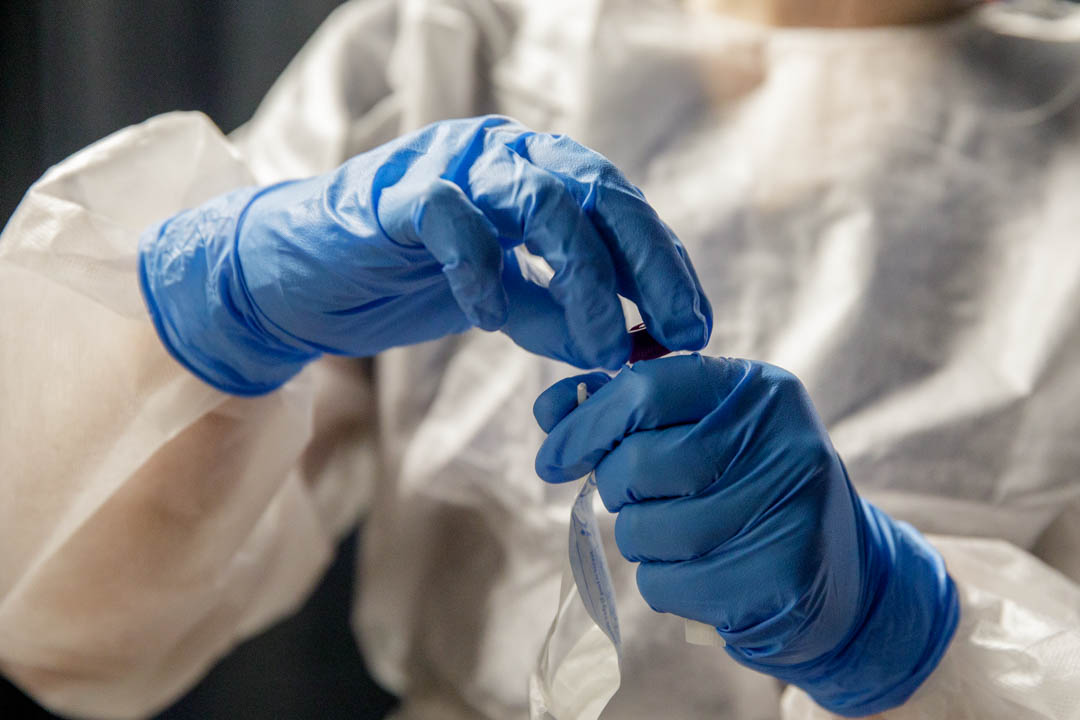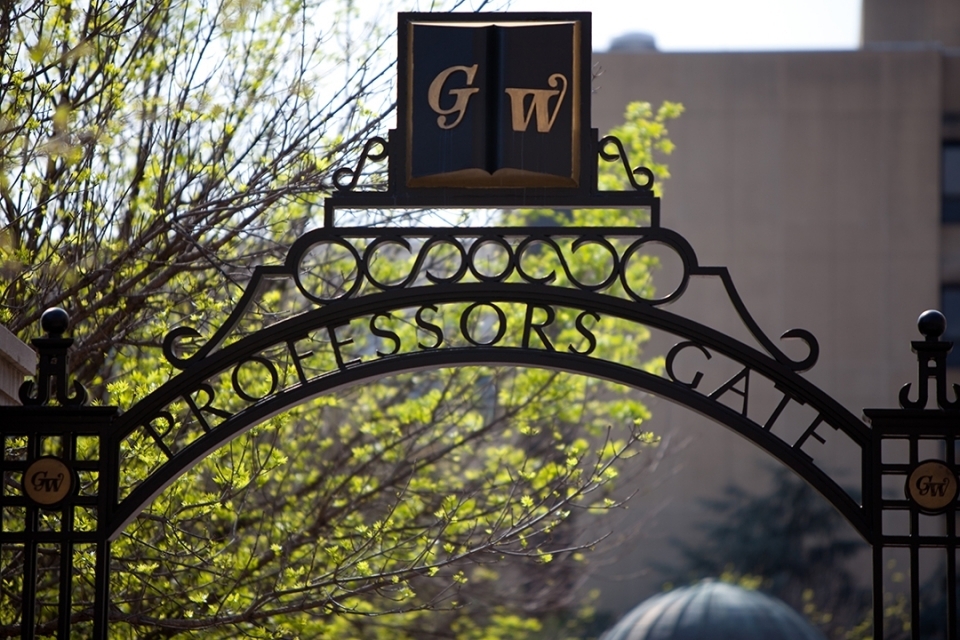By Kristen Mitchell
While George Washington University leaders were exploring how to safely bring a limited number of students, faculty and staff back to campus for fall semester, a Milken Institute School of Public Health research team started making plans. What began as a research study aimed at protecting health care workers from COVID-19 transformed, in a matter of weeks, into a large-scale testing protocol for GW’s on-campus community.
Cindy Liu, an associate professor in the department of environmental and occupational health and chief medical officer of Antibiotic Resistance Action Center, leads the new public health laboratory in Science and Engineering Hall processing thousands of COVID-19 tests a week.
“It took really a superhuman effort from everyone to make this happen,” Dr. Liu said. “It went from nothing to a working lab over a seven-week period. That’s extremely hard to do even without a pandemic.”
When hospitals in the United States became overwhelmed by COVID-19 patients and overtaxed supply chains jeopardized access to personal protective equipment such as N95 masks, Milken Institute SPH researchers, in collaboration with the GW Hospital and the GW School of Medicine and Health Sciences, launched a study to surveillance test GW health care workers to see if they have been infected or have developed antibodies to the deadly virus. Much of the Antibiotic Resistance Action Center’s research team, led by founding director and professor Lance Price, redirected their efforts to focus on this project.
“We launched our lab first as an IRB-approved research study, and then as we started talking about reopening campus for the fall, our efforts went completely into setting up COVID-19 testing response for the university,” Dr. Liu said.
These efforts included developing a COVID-19 diagnostic test—an adaptation of an existing coronavirus test approved by the Centers for Disease Control and Prevention— to support the university’s goal of providing rapid and accurate results. The U.S. Food and Drug Administration granted GW an Emergency Use Authorization to begin using this test to identify COVID-19 cases in early August.
It also included working around the clock to obtain basic supplies to run a lab—including PPE, pipet tips and all equipment necessary to quickly and efficiently process tests. Acquiring necessary supplies posed a significant challenge early on, said Dr. Liu, who credits the research team for their “incredible effort and skill” in rising to the challenge.
The university’s public health experts realized back in March that to keep the GW community safe, they would need to start regular testing of students, faculty and staff on campus alongside implementing recommended measures like mask wearing and social distancing, said Lynn R. Goldman, the Michael and Lori Milken Dean of the Milken Institute SPH. However, commercial labs were expensive and took too long to provide results, she said.
“Dr. Liu came to me with the idea of setting up a lab and a very accurate and automated process that would allow us to very efficiently, very quickly turn around tests on literally thousands of people per day and keep our campus safe that way,” Dr. Goldman said. “We are now regularly testing faculty, students and staff who are authorized to be on campus—as well as off campus students who request tests—so that we can stay ahead of the virus and prevent its spread.”
Assembling a Team
The Antibiotic Resistance Action Center was focused on two major research projects prior to the pandemic. The first is a study of bacteria in the human nasal and genital microbiomes to determine how various factors could make a person susceptible to different pathogens. The second project explores how antibiotic-resistant infections found on grocery store meat and poultry affect humans.
The researchers who work on these projects are skilled at using molecular techniques like DNA sequencing and polymerase chain reaction (PCR). PCR is a process scientists use to copy and study small segments of DNA and is a leading tool used to detect the virus that causes COVID-19. These skills, and the early foray into testing for health care workers, positioned the research team as an obvious choice to lead the university-wide testing lab. Several of these scientists were hired just before the pandemic—extremely fortuitous timing for the university, Dr. Liu said.
The research team, eight people in total, developed workflow protocols, purchased supplies, designed a laboratory information management system and ensured there was a user-friendly system in place for members of the community to schedule testing appointments. The team also hired and trained 14 additional laboratory staff to process tests and three clinical coordinators to oversee daily operations.
Vanessa Quinlivan, senior research associate, joined the lab in January. As the lab pivoted to COVID-19 testing, one of her responsibilities has been identifying substitutes for necessary supplies while maintaining test accuracy and sensitivity.
“Even this week I am trying to identify more and more alternatives to ensure lab testing can keep going, even if supply chain disruptions continue,” she said.
Typically when a lab is waiting on supplies, researchers can shift their focus for a few days or a week and turn to other elements of their project that need attention. That is not an option for the testing lab, however, which provides a critical public health service. Since August, the lab has processed more than 33,700 tests for approximately 4,000 members of the GW community. The university has maintained a positivity rate of less than 1% with 130 total positive tests.
“I have been happy to be able to contribute, to have something to work on, and I was happy that Dr. Liu, immediately when this started happening, was able to recognize that the framework of our high-throughput laboratory was ideal to convert into a testing lab,” Dr. Quinlivan said.
Increasing Capacity
All members of the fall on-campus community are tested weekly for COVID-19. They are required to report for testing appointments at testing sites on the Foggy Bottom and Virginia Science and Technology campuses, where trained health care workers and GW Nursing students administer the nasal swab tests. Like the lab, these clinics were also quickly assembled over the summer.
The university has expanded the testing population over time. Testing was initially limited to on-campus residents, students with campus access and faculty and staff who are required to be on campus. After about a month of testing, the university announced it would open up testing to students living in the D.C. region who are not part of the fall on-campus cohort. The university plans to welcome 1,100 additional residential students to campus for the spring semester, providing housing for all undergraduates who applied earlier this month. This will bring the total number of residential students on campus to 1,600 this spring.
The testing clinics and the test processing lab were all designed with scalability in mind. Increased use of automation will enable the processing lab to increase capacity while ensuring accurate and rapid results, said Research Associate Jack Villani.
“We did a lot of thinking and kind of mapping out on the backend of what is theoretically possible in order to increase the number of samples we could process in a single day,” he said. “The thing that contributed the most was increased equipment, especially with robots.”
The lab has increasingly relied on automation to quickly process and extract samples, which reduces human error and frees up staff researchers to focus on different tasks. The team is also looking toward the future, exploring research on the next generation of coronavirus tests to more easily detect non-symptomatic cases and at-home options that would reduce barriers to getting tested.
While the last few months have been what Mr. Villani describes as a “marathon and a whirlwind,” he’s proud of the work the team has done. Dr. Liu said it’s been fulfilling to see the lab grow into a robust public health service for the GW community.
“I feel very gratified to have been able to help,” she said. “I have a lot of appreciation and respect for people who have to go to work everyday, and I try to do my part in helping them feel safe in going home to their families.”

















